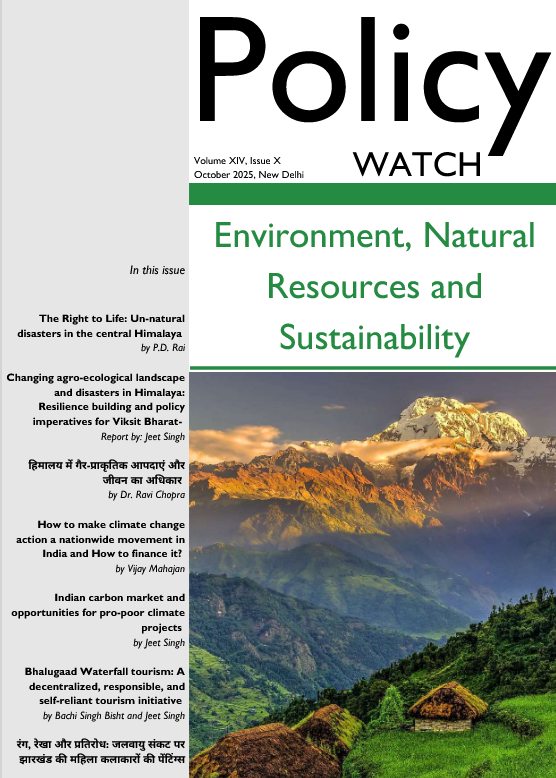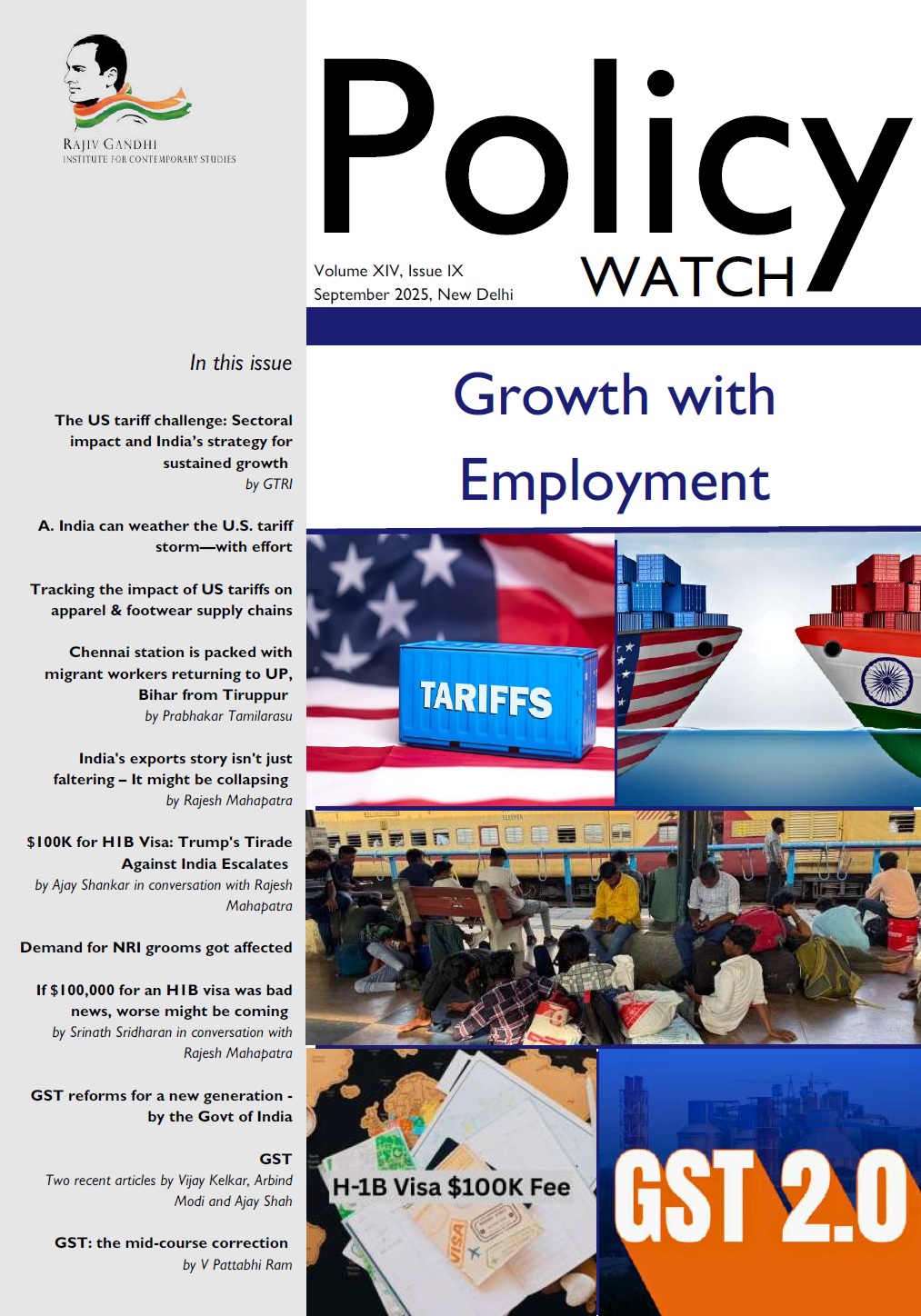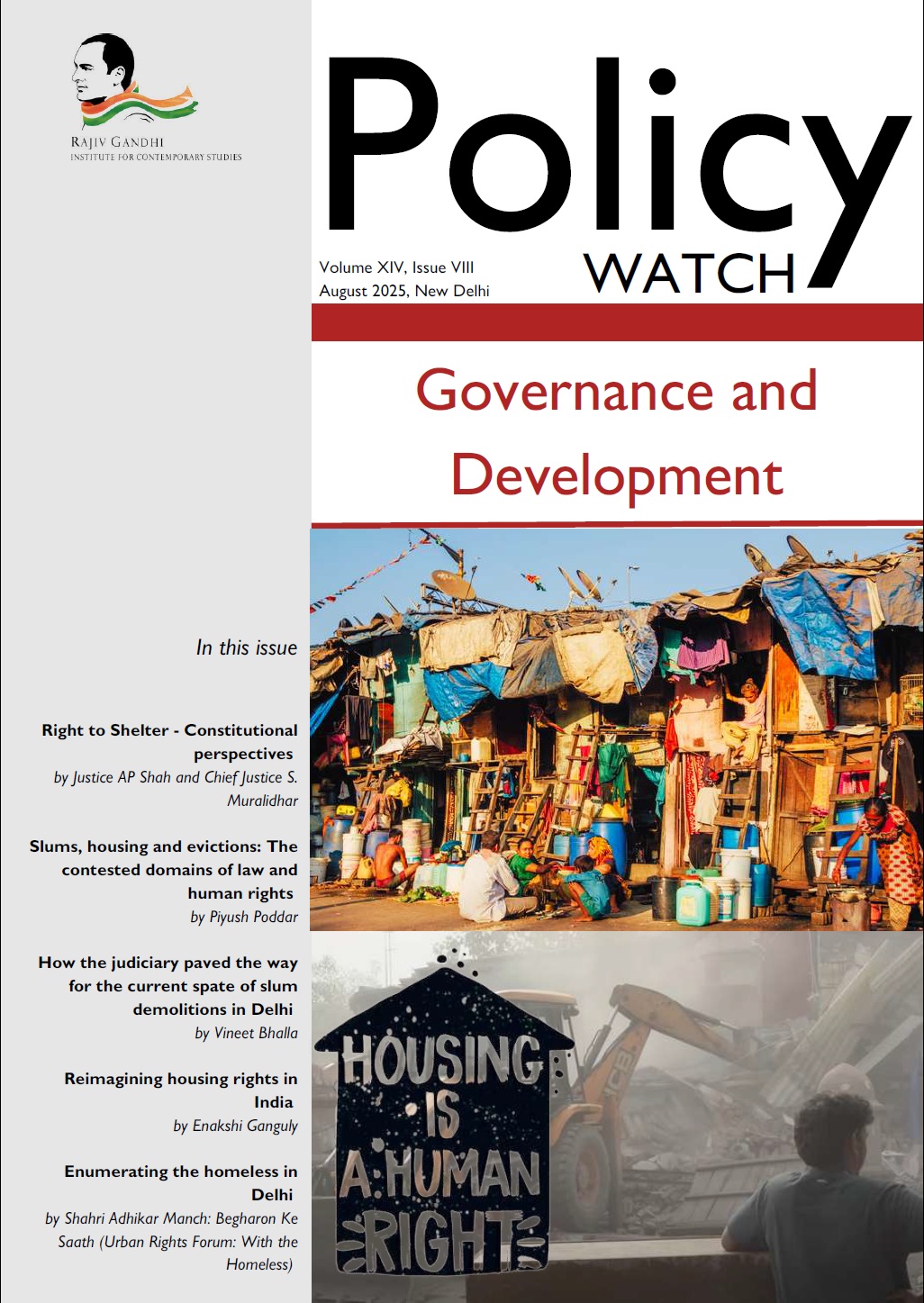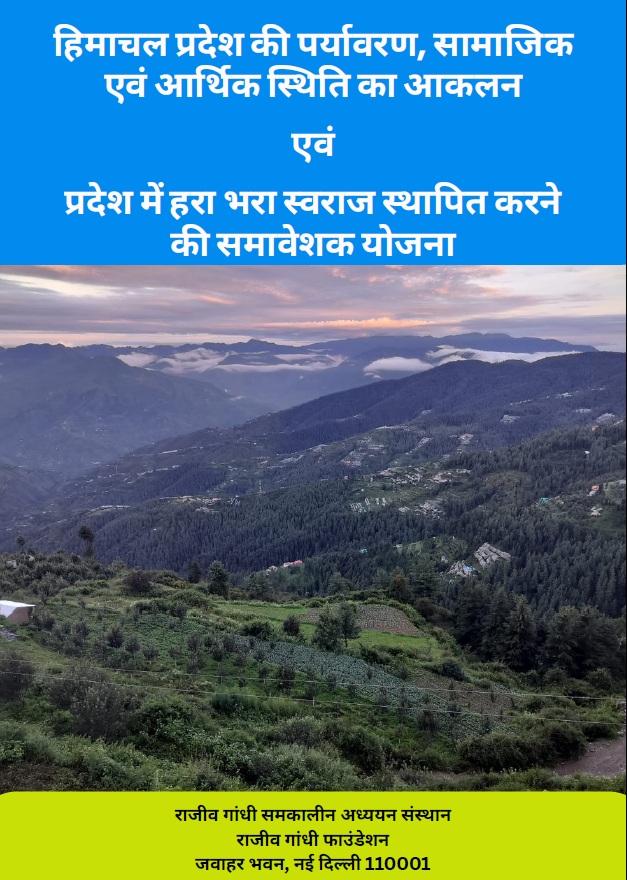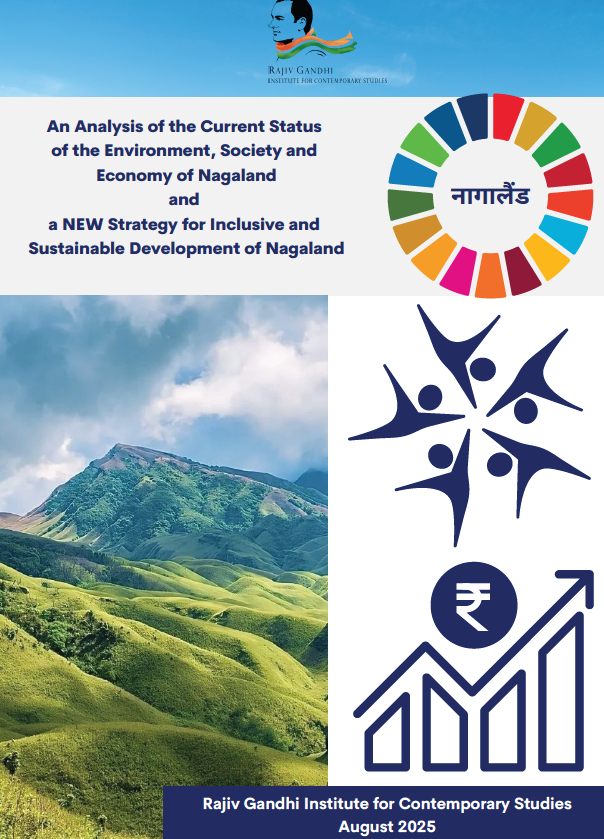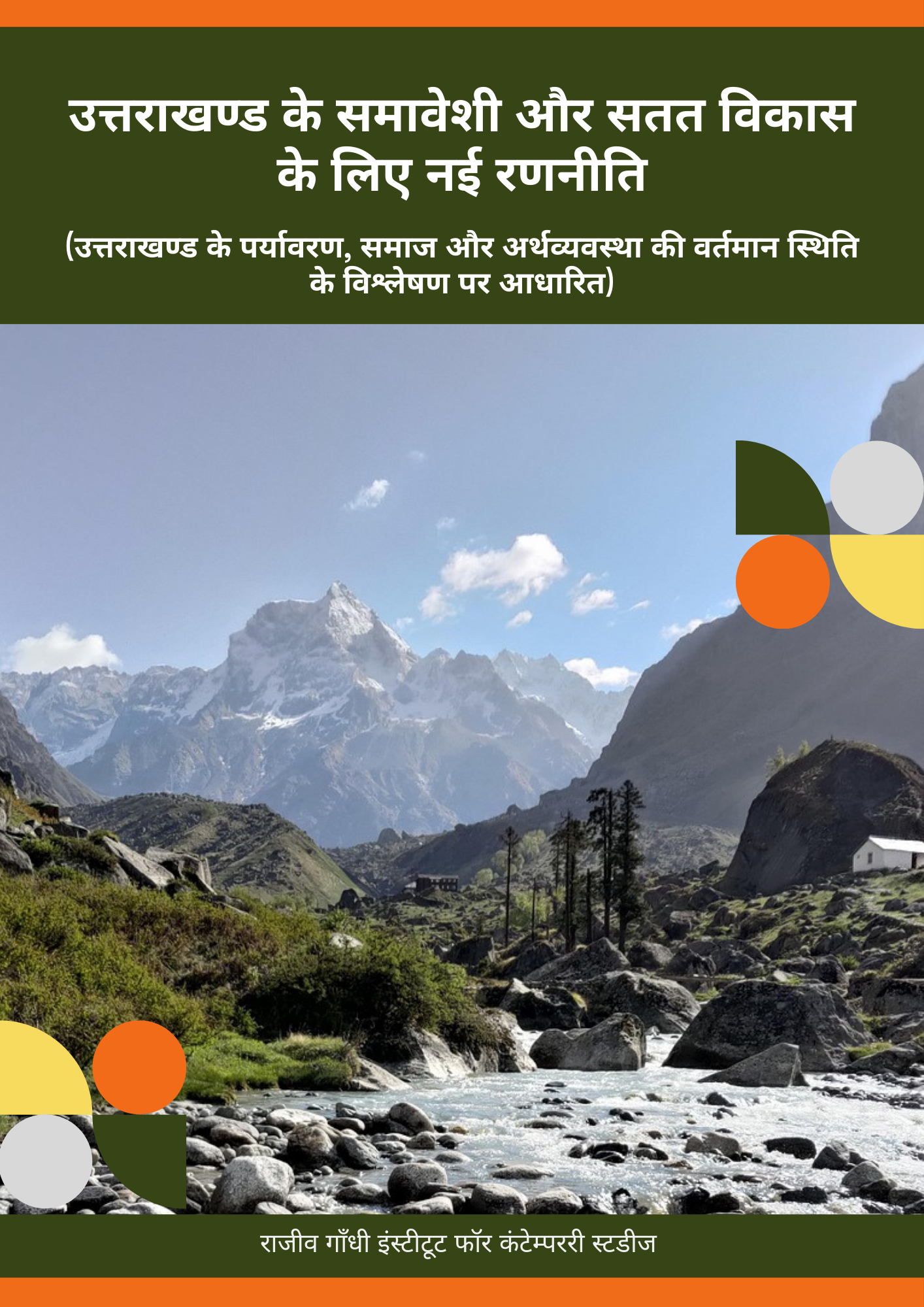This issue of Policy Watch is on the theme Environment, Natural Resources and Sustainability (ENR&S) and it focuses on issues pertaining to the degradation of natural resources and their social, economic, cultural and ecological consequences.
Continuing with our research work on COVID-19, the first article by Jeet Singh, Fellow, RGICS, and Gautam Bandopadhyay, Environmental Activist, Chhattisgarh, discusses the importance of common property resources (CPR) and how their regeneration can help to address ecological, economic and social challenges arising due to the current pandemic. This article attempts to highlight that the degradation of common property resources is one of the main causes of distress migration. The regeneration of these resources — jal, jangal, jameen — can provide wage work immediately to returned migrants, as well as local residents, and can enhance rural livelihoods in the long run.
The article by Steve Locket of Mahseer Trust, United Kingdom, unveils the unusual threat to the native Mahseer fish in particular and aquatic ecosystem in general. The article dwells on conservation strategies in India, specifically, releasing fish bred in captivity. The author makes the point that while artificial breeding of Mahseer fish may be an important technique and may be useful in a correctly-monitored program, at present, it has to be seen for what it has really become: farming. This can be a threat to the native Mahseer in the country. Instead of this, he advocates that Mahseer, the mighty ‘tiger of the river,’ should be assisted to live its natural life by protecting its river habitat.
Yet another flood in Bihar and other parts of India and loss of life and livelihood of millions of people prompted us to reprint a 2008 article of late Anupam Mishra, a leading environmentalist of India. We have reproduced this Hindi article verbatim here that describes the rich culture and traditions of people in Bihar and Nepal to convert overflowing rivers in a few days of Monsoon into a boon for the rest of the year. It further explains how these traditions and culture have been forgotten, often due to misconceived development and relief programs.
The fourth article reproduces observations of the High Powered Committee (HPC) constituted by the Ministry of Environment, Forest and Climate Change in pursuance to the direction of the Supreme Court’s order of August 08, 2018. The committee found that the Char Dham Pariyojana was poorly conceptualized and badly implemented and has serious ecological, social, cultural and economic consequences. We are delighted to note that the Supreme Court accepted the “minority” report and has held that the road to Char Dhams should have been no wider than 5.5 metre wide.
Policy Watch: Environment, Natural Resources and Sustainability – October 2020
Send download link to:



